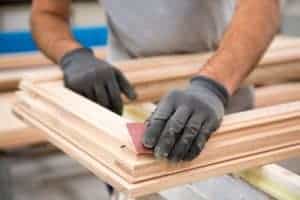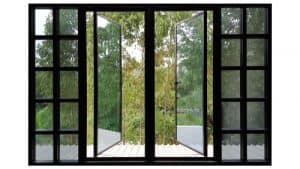How much do you know about windows and doors? That they open and close, come in different shapes and sizes and are found in every home in Australia? Very good. But how much do you know about window types? Today we will look at why smart Aussies are choosing uPVC as their window and door of choice, over more traditional options such as wood and aluminium.
Windows And Doors – The Choice
Okay so before we explain why uPVC is fast becoming the material of choice for windows and doors, let’s find out why other materials are falling out of favour.

Why Upvc Is Better Than Wood
- Requires little to no maintenance.
- Easy to clean.
- uPVC doesn’t rot, in fact, uPVC windows are weather, fire and fade resistant.
- uPVC is significantly cheaper than wood.
Aluminium Windows – aluminium has a high U-value, meaning that it conducts (and loses) heat and cold easily, making aluminium the least energy efficient of all available materials. This can also result in condensation, leading to other issues such as mould accumulation. Aluminium can also be susceptible to corrosion if exposed to salt in the water or air, leading to issues with operation, performance and appearance.

- uPVC is the most energy efficient material used for windows and doors, due to its low conductivity.
- uPVC is typically used for double glazed windows and doors, which seldom suffer from condensation due to their energy efficiency and double glazed technology.
- uPVC does not suffer from salt erosion the same way as aluminium can, making it an ideal material for coastal homes. It is also able to withstand even the most intense sun during Sydney summers.
- uPVC is significantly cheaper than aluminium, meaning you are making savings not only when choosing uPVC, as well as reducing your energy costs over time.
Why Choose uPVC?
Still not convinced that uPVC is for you? In addition to the above comparisons between traditional materials and uPVC, this versatile, innovative material has many other appealing features that are changing people’s opinions.

Durable – uPVC is a very durable material, so much so that it has been used for decades for the likes of water pipes to prevent corrosion and ensure longevity. Installing uPVC windows and doors means that you are investing in a solution that will likely outlast you.
Acoustic insulation – earlier we explained how uPVC is an excellent energy saving option, but did you know that uPVC double glazed windows also offer superior sound-reduction compared to traditional windows? In the noisy world that we live in, being able to drown out the mundane rumble of the outside world is always appealing.
Security – uPVC windows offer multi-locking systems, making this choice of windows and doors some of the safest available on the market today.
Recyclable – last but not least, did you know that uPVC is completely recyclable, meaning you are working towards a more sustainable home.
If you want to join the uPVC revolution, contact the team at Integra Windows today for your free no obligation quote today.
SIMPLE STEPS TO REQUEST A QUOTE?
Submit an online quote enquiry and we’ll be in touch and discuss the quote in more detail. Once all the relevant project details are obtained, we will be able to provide you with a final detailed quote.

